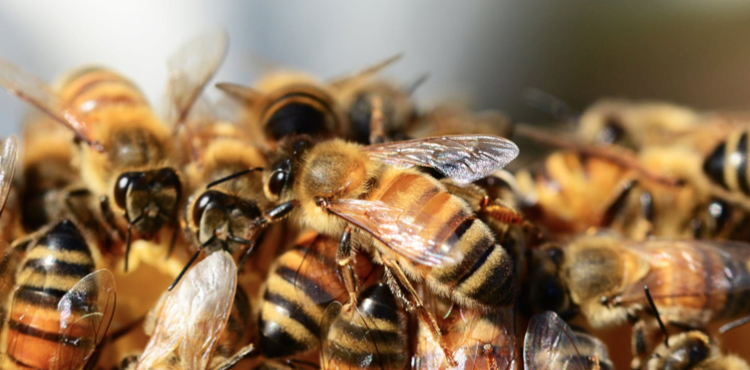Honey bee swarms can at once evoke both awe and disappointment within a beekeeper. It is truly an awesome sight to witness a colony throwing a swarm of bees.
But if the bees swarming happen to be from one of YOUR hives, you are also witnessing the loss of most or all of the honey you had hoped to produce from that swarming hive.
Why Honey Bees Swarm
Swarming is simply nature’s way of perpetuating the species. When a honey bee colony swarms, it is literally giving birth to a new colony. The swarm emerges from the parent hive with a queen, with honey, and with a large enough workforce to establish a new colony.
The process of giving birth can be risky at times for any species, and it’s no different for bees. A new honey bee swarm faces many challenges.
Will it be able to find an adequate shelter? Will it face starvation, or will it be able to build up its own stores of honey sufficiently to survive the coming winter? Will it succumb to disease or parasites?
How Honey Bees Swarm
In the spring, as the population of the hive increases, the resulting congestion within the hive is one of the primary catalysts for swarming. A hive with an older, less vigorous queen is also more likely to swarm.
Preparations for swarming actually begin several weeks ahead of time. A few weeks before the swarm occurs, the queen begins to lay an abnormally large number of eggs. The hive experiences a population boom when these eggs grow to adult bees.
During this period, the queen also lays eggs in a number of queen cells. One of these new queens will eventually take the current queen’s place in the parent colony when she leaves with the swarm.
The Queen Gets Skinny
Roughly a week before the swarm leaves, the queen’s egg laying drops off sharply. And her attendant bees feed her much less; so much so that her abdomen begins to shrink and her body weight diminishes. Her forced weight loss will enhance her flying ability.
The Worker Bees Get Fat
A few days before the swarm, scout bees begin to actively search for a new home. They communicate potential new homesites to other bees in the hive by dancing. And just before the swarm issues from the hive, the bees engorge themselves with honey. Then, as if on cue, tens of thousands of bees explode from the hive, filling the sky with a cloud of honey bees.
The Bees Hangout Temporarily…
Usually, bee swarms will cluster temporarily at a location close to the parent hive, while scout bees continue their search for the ideal new home site. The scout bees continue to convey information about possible new locations by dancing on the surface of the swarm cluster.
The more vigorous the dance of the scout bee, the better the location she has found. Once the new location is selected (and no one really knows how the bees make that decision), the cluster takes wing again, and makes its way to its new home.
Swarms Can Be Intimidating, But Not Dangerous
If, as a beekeeper, you should at some point find yourself in the midst of a honey bee swarm, it will be a memorable experience. After all, being enveloped in a cloud of 40,000 buzzing bees is not an everyday occurrence. It can be a little intimidating!
But you should know that bees are at no time less defensive and less likely to sting than when they are swarming. They are gorged with honey, and for the moment, they are homeless and have no hive to defend.
So just relax and enjoy the spectacle. It’s one that not many people are lucky enough to witness.

